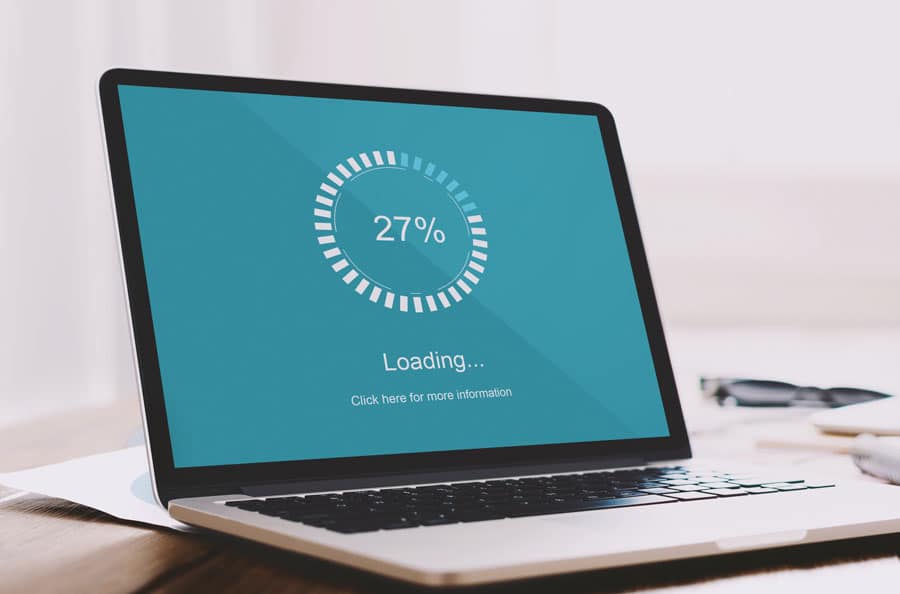
Found this article interesting?
If you would like personalized advice or have more questions, please contact us here.
Answering the common FAQs About Website Design Services
By Jose Roman in Website Design

You’re ready to get started on your new website. You may even be thinking about hiring an agency to make the site sparkle. However, you have some questions, and you need answers. Below is a thorough, in-depth Q&A about website design services. We answer frequently asked questions to help you make the most informed decisions about design and development. If you have further questions, reach out to the Webmasters at Tagline Media. We’re happy to provide the answers you need to move forward. Let’s start! There is no one-size-fits-all answer to this question. The total cost of your website's design ultimately depends on what you’re looking for. Companies also offer different pricing structures based on the services they provide. Some examples of common pricing structures, include: The designer charges a flat-fee for the entire project regardless of what is involved or how long the project takes. The benefit of this rate is that you know how much you’re going to pay and you can budget accordingly. The downside is there is little flexibility in products or services—you get what you get. The designer charges an hourly rate with a final bill that reflects the hours spent on the project. This rate works well if the designer provides an accurate estimate. However, you’ll need to prepare to pay more if the project takes longer than expected. Hourly rates offer flexibility with the products or services offered. This is the best option if you don’t need the full spread of services the designer offers. For instance, you may need specific updates on an already existing website. A la carte offers lots of flexibility but also allows you to budget accordingly. Pay only for what you need without wasting money on the services you don’t need or use. Another common question people ask about website design is, “What exactly is it that I’m paying for?” A professional developer should anticipate this question and provide you an itemized list of things covered. Here are some common website design services that companies offer: Although this may sound confusing, which it is, a serious agency must be able to synthesize all these terms in a clear and understandable proposal for any client. In fact, some of these terms refer to aspects of web development that by default are (or should be) included in the process itself. I mean, nowadays it is unthinkable to make a website only for desktop devices. Therefore, the sub-service 'responsive web development' is something that, although it is not superfluous to include in the proposal, it is not a service for which the customer must pay extra. And this must be made clear from the beginning. At TagLine Media we include in our proposals terms like that, and others, so that the client knows that he will receive a fully finished, responsive website, optimized for high performance and optimized for SEO. No last minute surprises. A new website typically costs more than revamping an existing one, as it requires building everything from scratch. The higher cost is due to the need for comprehensive planning, design, development, and testing of an entirely new web presence. Revamping an existing website is generally less expensive than creating a new one. The designer can work with the existing structure and content. They can update the design, improve functionality, and enhance user experience. They can also use existing elements and reduce time needed for planning and development compared to a complete rebuild. Again, the answer to this question depends on what you want the web designer to do. Remember, design a website is a process, and the process is different for each agency. A well-established web design company will have a proven efficient process with a client-centered collaborative approach. That said, here’s what a standard website build timeline looks like: You may be adding all those weeks in your head and thinking that it will take forever to publish your website. However, many of these tasks are concurrent, going on at the same time. For instance, While the designer is generating mockups, the writer is creating the content. In total, you’re looking at 10-14 weeks from ideation to completion. The short answer to this question is: as many as it takes. However, that answer needs some explaining. Web design agencies use a sitemap to establish a website structure. The sitemap usually consists of a main page, main menu pages, sub-menu pages, outliers, and blog pages. The pages are structured for easy navigation and indexing. The web designer will meet with you to determine what the sitemap will look like and what pages go in it. It forms the basis for the number of pages on the site. However, there’s more to it than that. There are several things you need to consider when determining how many pages your website needs. Let’s cover some of these. Every service or product you offer needs its own page. Why? First, every offering caters to a different audience. If you exclude a product and subsequent page, you’re potentially missing out on a market. Second, adding more product or service pages is good for SEO, it gives you another opportunity to rank your page or website higher in organic Google searches. Part of the process of web development is optimizing your website so that people can find it online. SEO is the vehicle that gets this done. The developer performs an SEO analysis and keyword research to match the content with common search phrases that people type into Google. As a result, the web team will create entire pages based on high-ranking keywords. Here’s a quick example: Let’s say an HVAC company offers different types of services in Tucson, such as: These services are also phrases that people type into Google. For example, someone may type in ‘AC repair in Tucson’ in Google. If your web page contains that phrase and similar phrases, it’s more likely to be seen in Google searches. So, you want to create a page around that service and that key phrase. This aspect is something we like to cover at TagLine Media when we start working on a web project as we think it is something basic. If your website has five pages and your competitor’s has 40 pages, their website is more likely to be seen. Granted, the quality of your website matters. However, there is something to be said about more pages and more words on a website. It creates more opportunities for online visibility. This is why website design companies will often encourage clients to post as many pages as possible. These days, Google rewards websites that demonstrate authority. Two ways to establish authority is to have multiple pages that are easy to identify (crawl) and organized and well-structured (indexing). If your website is easily crawlable and has a high number of indexed pages, it is more likely to be seen as authoritative by Google. This is because your site is more likely to have comprehensive, accessible, and up-to-date content. Additionally, well-indexed sites can better leverage SEO strategies, such as keyword optimization and internal linking, to improve their rankings and authority in search results. Tagline Media’s web team can help you create a sitemap with pages that features all your company’s products and services. We can structure your site so that your pages are well-organized, easy to navigate and rank well in Google searches. Getting your site up and running is only the first step in your marketing strategy. You need to maintain and ‘massage’ your site to keep it visible and competitive. The cost of maintaining a website depends on what services and products you need. Website maintenance is more complicated than you think. Web developers have to do a wide range of tasks to maintain peak website performance. These tasks determine how much they charge for maintaining the site. Here’s a shortlist of hosting tasks: You may be wondering why maintenance is important. Consider these reasons: Your competitors and their web team are always coming up with creative ideas to outperform the competition. Your web designer monitors competitor trends and updates your website to compete. If you don’t make fresh updates to your design, messaging, products, and brand, you’ll quickly become irrelevant. Your competition will leave you in the dust. The biggest, most secure companies in the world have fallen prey to security breaches: Walmart, Facebook, Google, Apple, Amazon—the list goes on. If hackers can penetrate their platforms, they can get to your website. Your web developer updates your website to make it more secure and prevent spyware and malware attacks that put you and your clients at risk. The best way to engage your audience is to add new pages, update content, and blog. Content updates establish both authority and relevance. When presented well and indexed properly, Google rewards websites that contain ongoing fresh content. Without it, your message and your brand become stale. Tagline Media offers three website hosting packages that include maintenance. Our plans cover the areas you care about the most: Our plans are designed to different clients depending on where you’re at with your website. Our website design experts can help you choose the right plan that matches your website needs. Although web designer and web developer tasks can overlap, the two roles are not interchangeable. On the contrary, designers and developers have different roles and do different things with your website depending on what you need. Let’s compare the two: A web designer creates a visually appealing and functional website on a platform like WordPress. They combine artistic skills with technical knowledge to craft user-friendly platforms, while crafting brand messages. Web designers stay current with design trends and web technology to deliver modern, responsive sites that work across various devices and platforms. Here’s a list of web designer tasks: A web developer builds and maintains the core structure of websites using programming languages. They focus on the technical aspects of a site, including server-side scripting, database management, and ensuring optimal performance and functionality. Web developers collaborate with designers to implement visual elements, create custom applications, and integrate third-party services. Here’s a list of web developer tasks: A web designer focuses on the visual and aesthetic aspects of a website and makes sure it’s user-friendly and visually appealing. The developer handles the technical side, building and maintaining the website's core structure and functionality. While designers work on layout and user experience, developers use coding languages to bring these designs to life. If you want a powerful, full-scale, secure website and don’t have time to do the myriad of tasks it takes to maintain and optimize it, then yes, outsourcing it to a local web development firm is the way to go. But before we tell you the reasons why, let’s do a side-by-side comparison: In-House Website Design: Higher due to salaries, benefits, and overhead expenses. Outsourcing Website Design: Generally lower as you pay only for the project without additional overhead costs. In-House Website Design: Full control over the project and direct oversight of the team. Outsourcing Website Design: Less direct control, but can be managed through clear communication and project management. In-House Website Design: Easier and faster with face-to-face interactions and immediate feedback. Outsourcing Website Design: May face challenges due to time zone differences and remote communication. In-House Website Design: Limited to the skills and experience of the in-house team. Outsourcing Website Design: Access to a broader talent pool with specialized skills and experience. In-House Website Design: Less flexible, as in-house teams may be tied up with other projects and responsibilities. Outsourcing Website Design: More flexible, as you can hire specific experts for different phases of the project. In-House Website Design: Longer due to hiring and onboarding processes. Outsourcing Website Design: Quicker start as outsourcing firms are ready to begin immediately. In-House Website Design: Potential risks with data security and intellectual property when working with inexpert teams. Outsourcing Website Design: Easier to maintain data security and protect intellectual property. In-House Website Design: Difficult to scale quickly due to hiring constraints. Outsourcing Website Design: Easier to scale up or down based on project needs. In-House Website Design: Better for ongoing, long-term projects with continuous updates and maintenance. Outsourcing Website Design: Suitable for short-term projects or specific tasks with defined timelines. In-House Website Design: Better initial alignment with company culture and values. Outsourcing Website Design: May require time to align with the company's culture and values. In-House Website Design: May be limited by the in-house team's exposure to new trends and technologies. Outsourcing Website Design: Often brings fresh perspectives and innovative solutions from diverse experiences. In-House Website Design: Requires managing HR, equipment, and workspace for the in-house team. Outsourcing Website Design: No need to manage additional resources, as the outsourcing firm handles their own logistics. There’s always an assumption that outsourcing tasks is more expensive. This may be true in other industries, but, with web design, the costs are much lower. Hiring an in-house team requires supplies, equipment, furniture, salaries, incentives, and benefits. All this goes away when you outsource the job. Yes, you may be surprised to find out the cost of hiring someone to design, develop, and maintain a site. The upfront costs may be more. But if you spread costs out annually, you’ll notice they’re exponentially less than hiring someone. Sure, you may hire someone who is highly skilled at designing a website. But what if that’s ALL they know how to do? Building and maintaining a website requires a team of experts, including a designer, SEO specialist, developer, copywriter, project manager, IT specialist, graphic designer, market team, analyst, security expert, and a webmaster. When you outsource the job, you’ve just hired an army of experts who work together to make sure you have the best website experience possible. If you’re going to undertake the job of creating an amazing website that reflects your amazing brand, you first have to ask yourself if you have the time, team, and resources to do it. You may have the intention of going at it with a simplistic approach. Maybe there’s someone already on your team who already knows a thing or two about website design. However, it won’t take long until you realize just how complicated the entire process is—not to mention how you’re going to maintain and market the website once you build it. When you hire a website design agency, you enlist a team of people who are ready to take on the job right now. They’ll follow a clear and rigid process to make sure your website goes live quickly without losing quality. You can focus on other areas of running your business. When choosing a website design provider or service, there are lots of things you need to consider such as your marketing goals, the type of website you want, and your budget. Think about the website design and the number of pages you’ll need. Also, consider the type of services you need. Finally, weigh the pros and cons of DIY vs hiring a web design agency. Do your research and make sure you have answers to your biggest questions before moving forward.How Much Does a Website Cost?
Flat-Rate Pricing
Hourly-Rate Pricing
A La Carte Pricing
If It's a New Website
If It's a Revamped Website
How many hours does it take to design a website?
Initial consultation 1 week Planning and research 2 weeks Content creation and SEO 2 weeks UI/UX design 4 weeks Design mockups 2 weeks Client feedback and revisions 2 weeks Development and coding 4 weeks Testing and quality assurance 2 weeks Final revisions and tweaks 1 week1 Launch preparation 1 week Website launch 1 day Post-launch analysis and maintenance Ongoing How many pages should a good website have?
Your Services or Products
SEO and Keyword Strategy
It doesn't make sense to build a website and not have it ready to start ranking organically in a natural way.Your Competition
Crawlability and Indexing
How Much Does It Cost to Host and Maintain a Website?
Your Website Needs to Compete
Your Website Is Always at Risk
Blogging and Content Updates
What Is the Difference Between a Web Designer and Web Developer?
What is a Web Designer?
What Is a Web Developer?
What’s the Biggest Difference?
Is it worth hiring a web designer or agency?
Cost
Control
Communication
Expertise
Flexibility
Time to Start
Security
Scalability
Long-term Support
Cultural Fit
Innovation
Resource management
Hiring a Website Design Agency Is Less Expensive
You Get an Expert in Every Chair
You Don’t Have Time or Resources for This
Wrapping Up
Still have questions or specific needs? we're ready to assist! Reach out to us for personalized advice and solutions tailored to your business.



